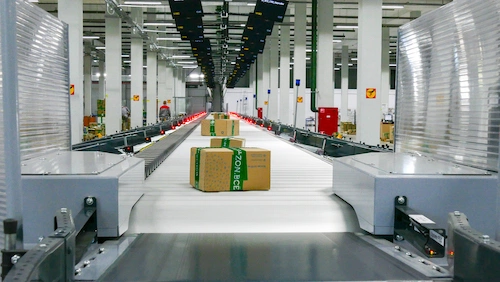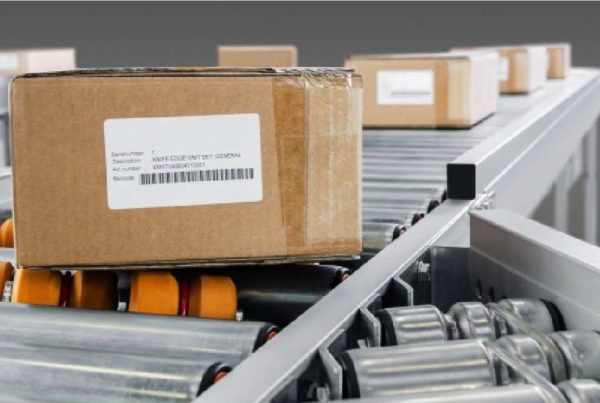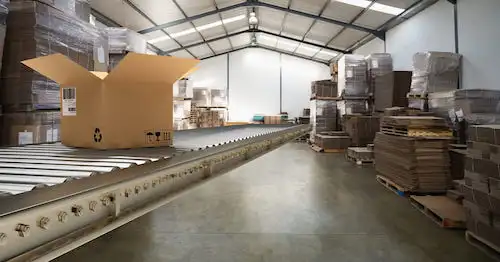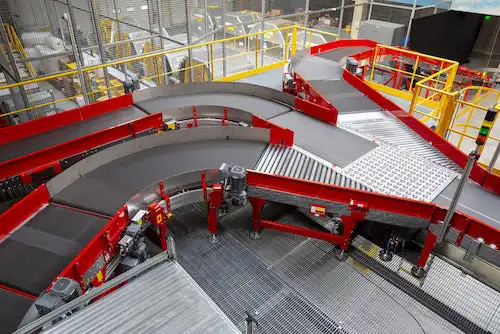Featuring very high throughput rates, efficient sorting, and quick delivery, cross belt sorters offer rapid-deployment solutions to most industries. Cross-belt sorters technology, even with little to no oversight and human input, offers incredibly tight sortation rates that may exceed 500 cartons per minute — depending on the model and other specs. The sorter allows most manufacturing businesses, distribution centers, and warehouses the ability to achieve high performances in a small amount of time.
What is a cross-belt sorter?
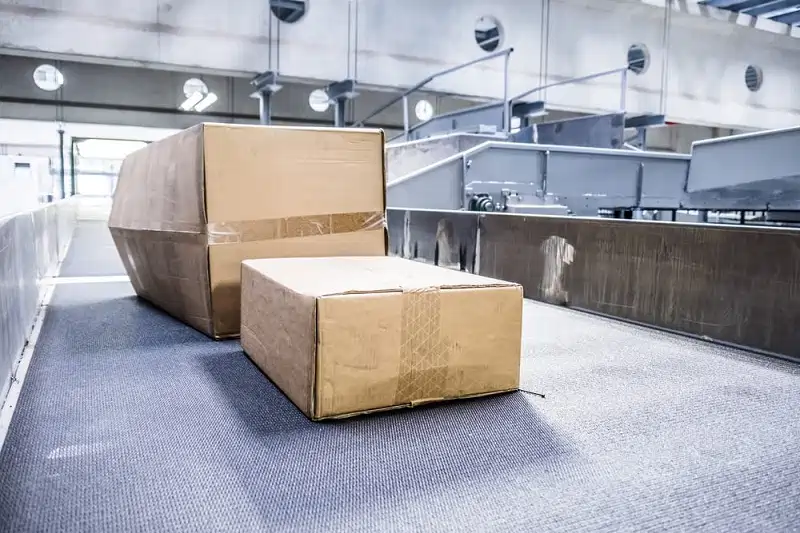
A cross-belt sorter is a machine that is used to sort different types of materials — in the case of warehouse and distribution centers, and different parcels. The system typically sorts paper, plastics, and metal products. It was first created for manufacturing and later adapted into a warehouse. It does so by sensing what type of material it has been assigned to and then diverts it to the appropriate conveyor belt.
A cross-belt sorter system is incredibly flexible and can be used in a variety of applications and industries. In warehouses and distribution centers it is generally used for inbound sortation, order fulfillment, cross-docking, shipping, cutaway, kitting, and much more.
Its general versatility allows it to adapt and handle multiple mixed products.
How does a cross-belt sorter work?
Cross-belt sorters are essentially extremely complex, fast, and integrated conveyor-based sortation systems backed by highly powerful algorithms and software. The system moves products from one location to the other across a small segment of conveyors and stations. The main sorter component, the carrier, is composed of a series of carts that are made up of small bi-directional conveyor belts.
Afterward, the cross belt sorter works by firstly scanning the product with a laser or camera to identify its shape, size, color, weight, and other features. The information about the product is then sent to the computer that determines where it should be sorted. The computer sends signals along wires that are connected to the belts on either side of the machine which forces each belt to move in opposite directions. This causes all of the products on one side of the belt to move toward one side while all of those on the other side move toward another.
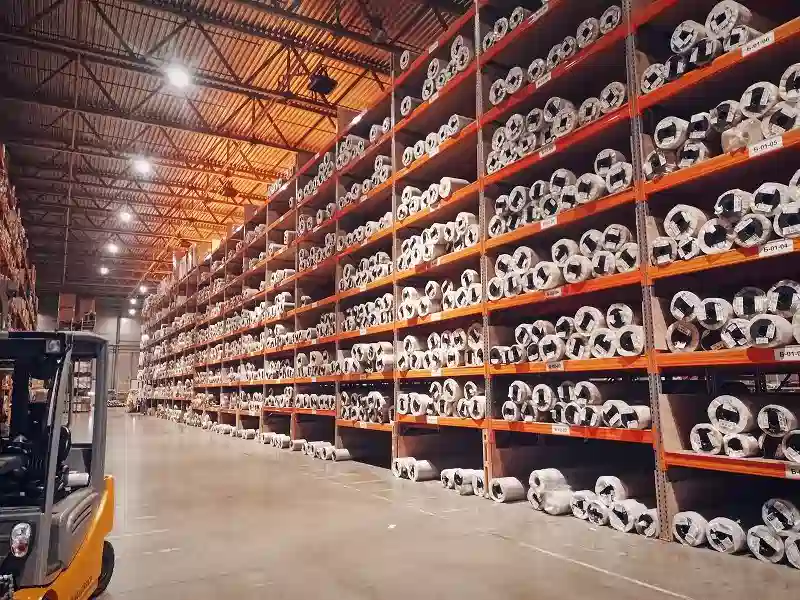
Most cross belt sorter configurations occur either in a straight line or in a loop and can process, depending on a cycle through and speed, as well as the size of parcels, anywhere between 60 to 500 parts per minute.
Types of cross belt sorters
There are a variety of different cross-belt sorters — each industry and each cross-belt sorter manufacturer can have unique products. Nevertheless, the standard two are horizontal cross-belt sorters and vertical cross-belt sorters. In both cases, current generations employ linear induction motor technology — this means they are simpler to operate, maintain, and endure less mechanical wear over time.
Horizontal Cross Belt Sorter
A horizontal cross-belt sorter is a device that sorts objects into bins, shelves, or stations according to the shape and size of the object. The machine consists of two large belts that move in opposite directions, with one belt at right angle to the other. Objects are sorted as they slide across these belts.
Vertical Cross Belt Sorter
A vertical cross-belt sorter is a machine that sorts items of different sizes and shapes. It has two belts, one on top of the other, that move in opposite directions. The bottom belt moves forward while the top belt moves back. As items are inserted into the machine, they are carried by the belt to specific openings where they are sorted by size or shape.
Benefits of cross-belt sorter systems
Cross-belt sorter systems are leveraged to improve many of the key operations of a warehouse. Including providing advantages and competitive edge by facilitating the following:
- Improving throughput rates.
- Allowing your business to handle a different range of products.
- Giving your warehouse a more flexible layout.
- Lowering operating costs.
- Allowing you fast deployment of the cross belt sorter system.
Cross-belt sorter conveyors can improve your overall capacity and load rate. They can accomplish high speed with small retail products, clothing and apparel, envelopes and small packages, small electronics, health products, jewelry, clothing, apparel, etc.
Which cross belt is right for you?
There are many options and customizations to consider, that is why it is essential to contact a specialist. You will need to consider factors like type, size, and weight of items being sorted. Along with product variety as well as handling needs; desired speed; facility layout; space consideration; stages of order fulfillment — and finally, where you see yourself in the future.
Contact an SRSI specialist at 833-228-6902 or email us at [email protected].
 Skip to main content
Skip to main content

